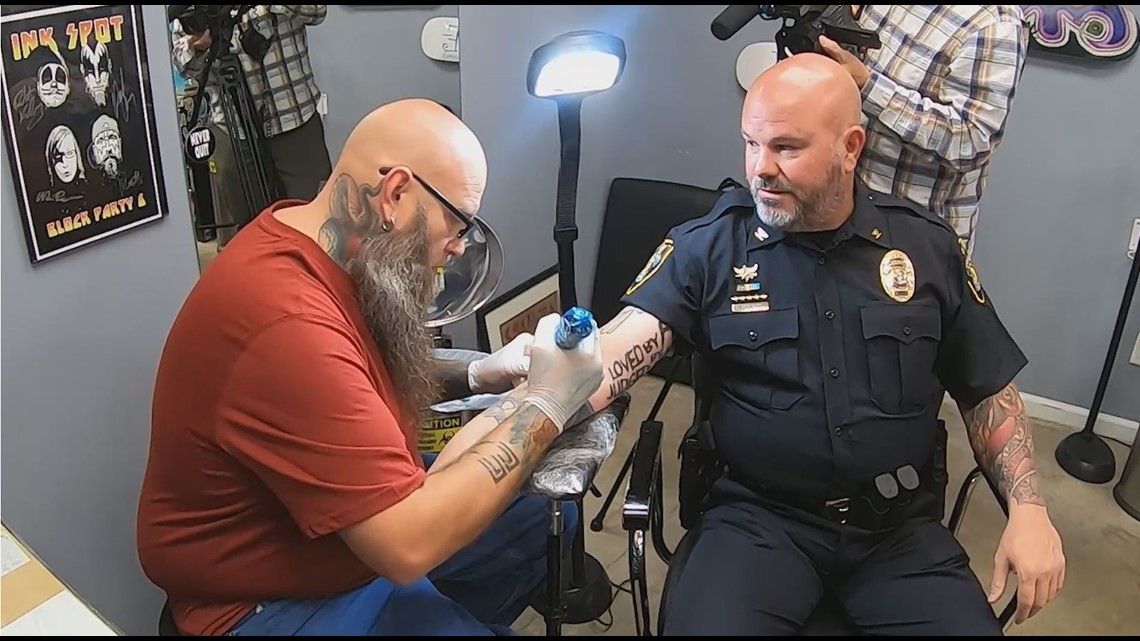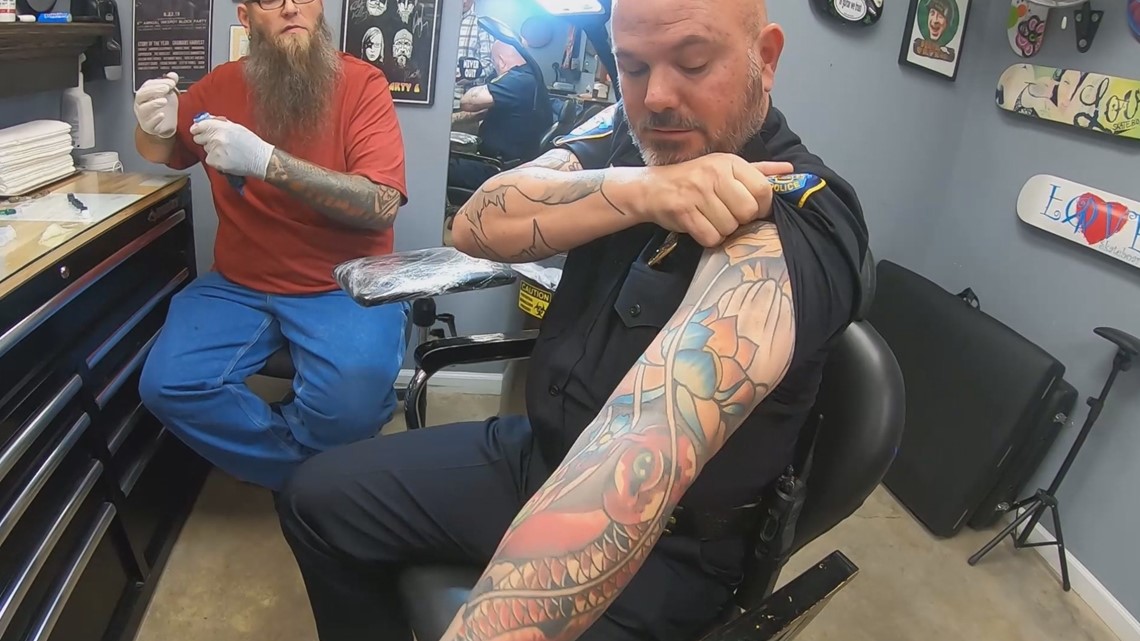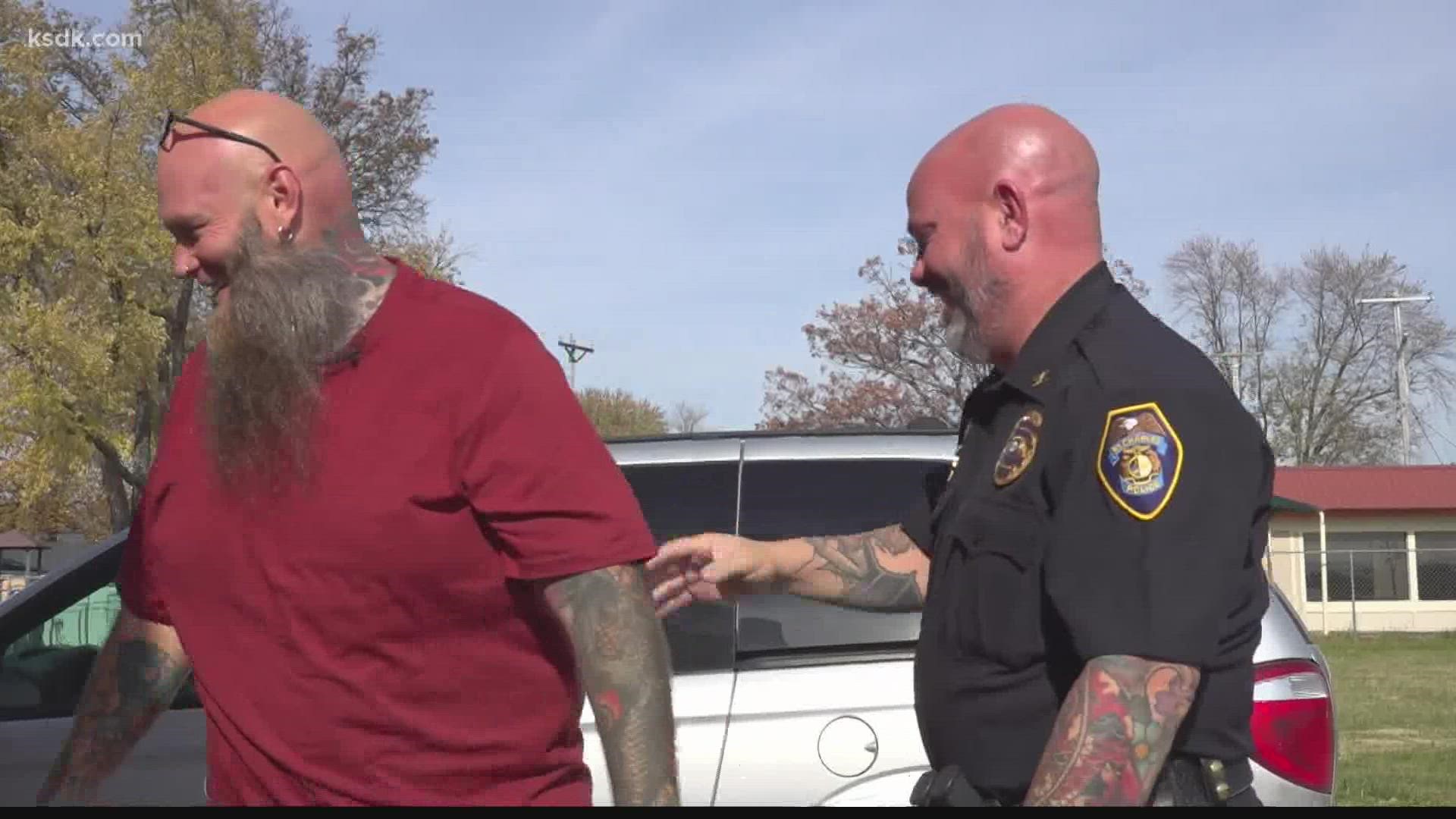Byers' Beat is a weekly column written by the I-Team's Christine Byers, who has covered public safety in St. Louis for 15 years. It is intended to offer context and analysis to the week's biggest crime stories and public safety issues.
ST. CHARLES, Mo. — Police officers in St. Charles city might look a bit different than most – including the city’s police chief.
Chief Ray Juengst put his full sleeve tattoos on display this week for a story we did about an unorthodox relationship he has developed with his tattoo artist – an ex-con he used to chase during his days in the drug unit.
Juengst said he waited years to get his ink as his department’s policy forbid him from having tattoos. Other departments require officers to wear coverups or long sleeves -- if they allow tattoos at all.
“During the summer, that’s extremely hot and uncomfortable,” Juengst said.


Almost every police department I’ve ever covered bans them, and, if there are ever changes to the policy, it’s news.
That’s why I asked Juengst about his tattoos when I interviewed him for a different story.
I haven’t seen a police chief with so much ink before.
The story he told me behind the tattoo artist he works with, David “Big Dave” Canoy, turned into the piece, but I was also curious about how his department felt about tattoos.
“When I got into a position where I could influence the policy, I changed the policy,” he said.
In addition to tattoos, Juengst allows his officers to sport full beards year-round and wear outer carriers to get some of the load from their duty belts off their waists.
Juengst said his motives are related to recruitment.
“More and more people kept showing up to our testing process with tattoos on them,” he said.
So, he went to his chief.
“I had multiple conversations with him and he agreed to let me draft the policy and see what he thought of it,” he recalled.
The changes didn’t go over well among his peers.
“Other chiefs hated, absolutely hated some of the stuff I’ve done since I became chief,” he said. “It drove them crazy, between the beards, the tattoos, it’s all stuff that modern law enforcement is doing.
“East Coast, West Coast, down south, you see it. You just don’t see it here. So I tried to break that so we could bring in people and get people here.”


But Juengst doesn’t allow his officers to sport just any tattoo they want where they want to.
The department’s policy requires officers to submit descriptions of the tattoos they want to get and where they want to get them ahead of going under the needle.
“When you get that tattoo and it comes back and it’s completely the opposite of what you submitted to me, I can say, ‘Now you’re in long sleeves or you’re out of a job,’” he said.
Juengst also forbids officers from getting tattoos on their hands or face.
“When we go to a funeral, or we go to a line of duty death or something like that, we're in what we call a Class A uniform, so long sleeves, a tie, hat,” he said. “I wanted to honor that tradition and not have the tattoos exposed during that.
“So our tattoos are only allowed where they can be covered up.”
So far, 25 people have gotten ink since Juengst enacted the policy in 2015.

